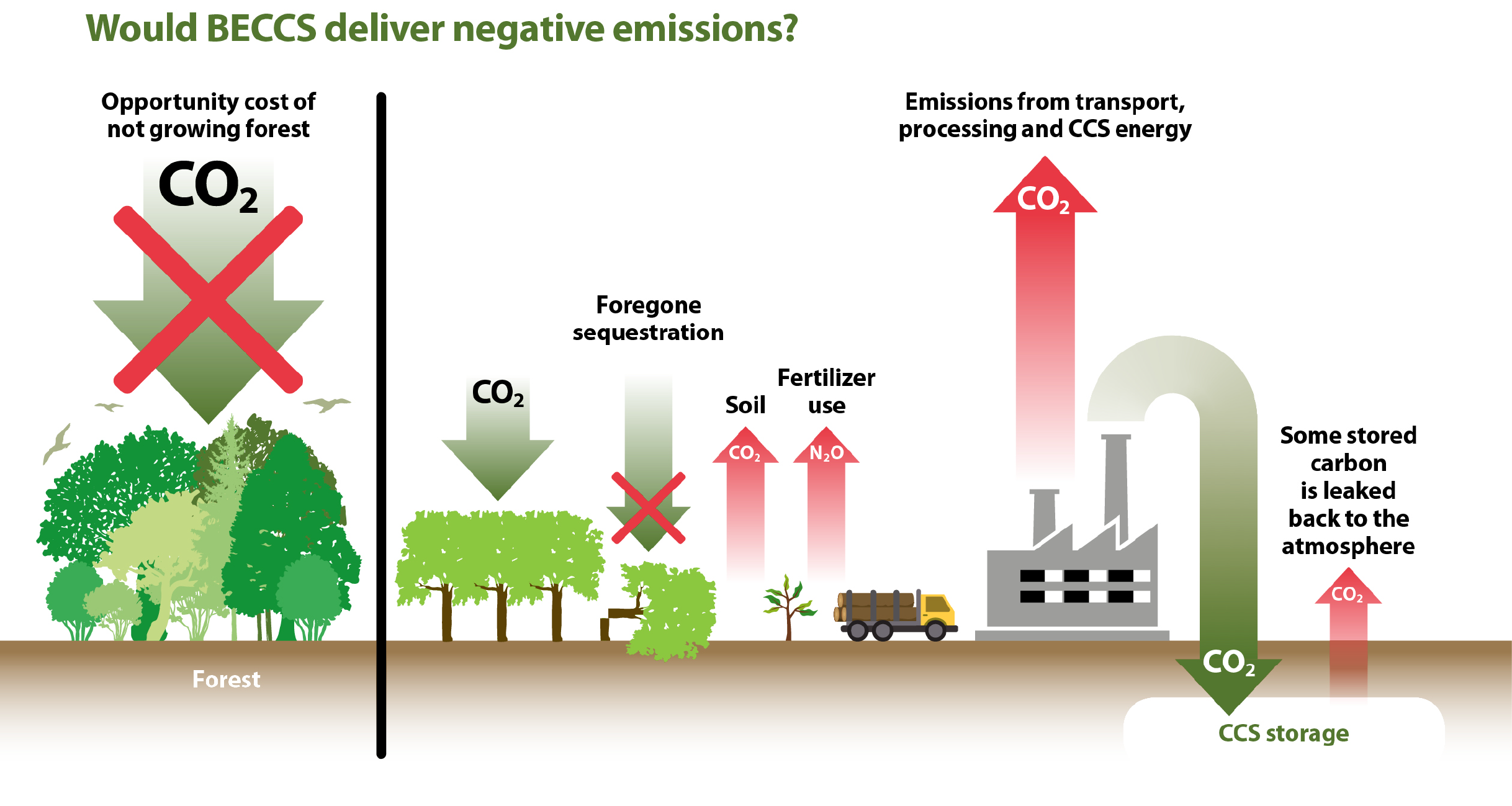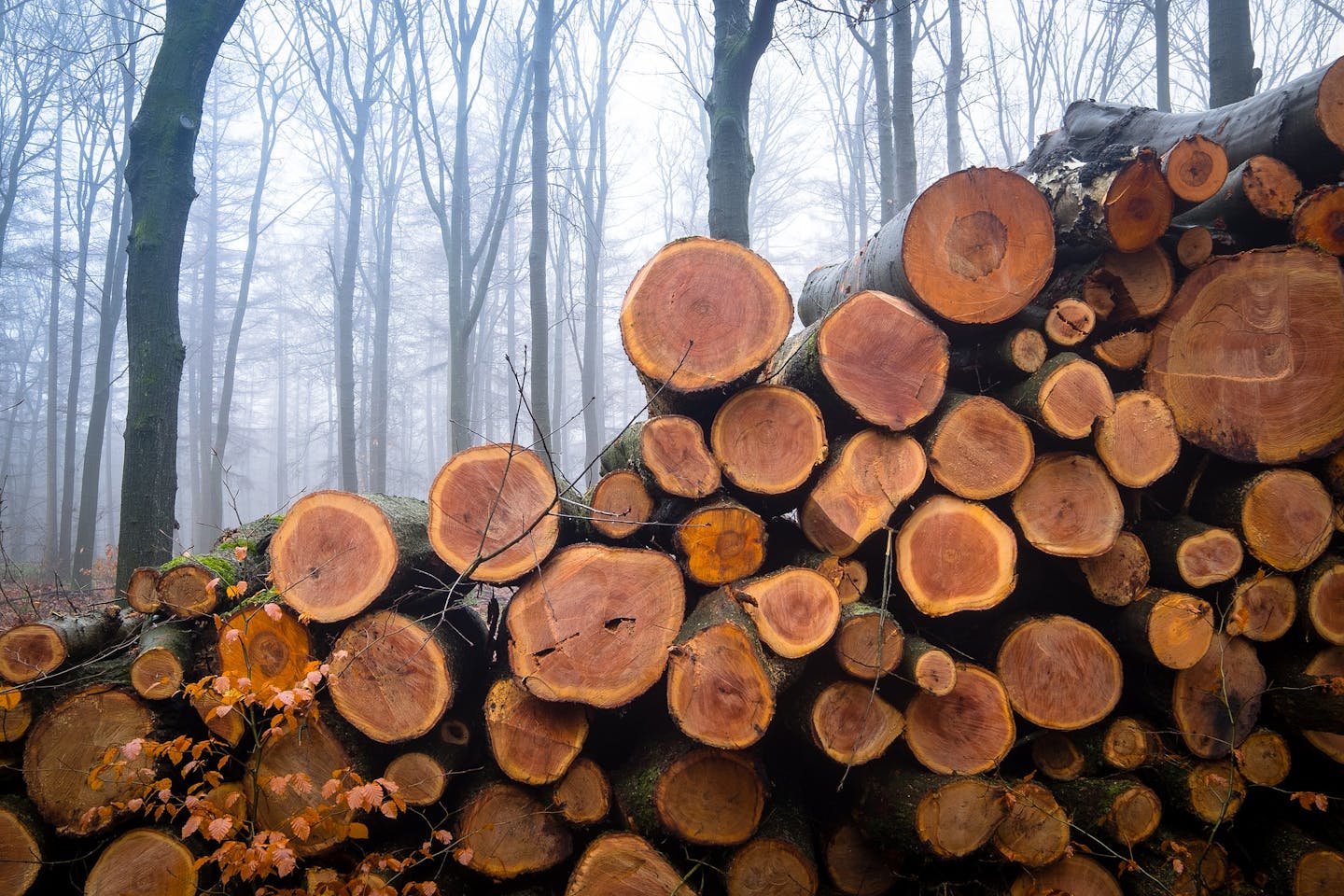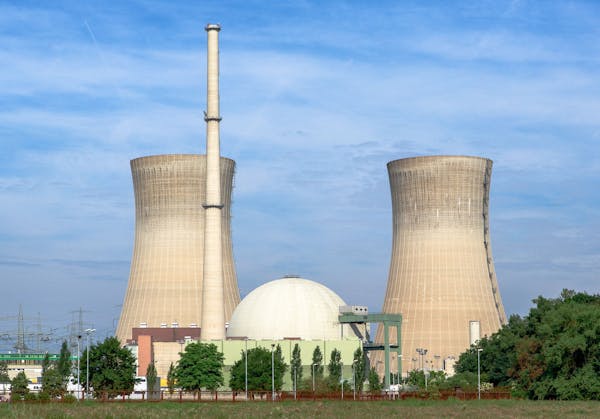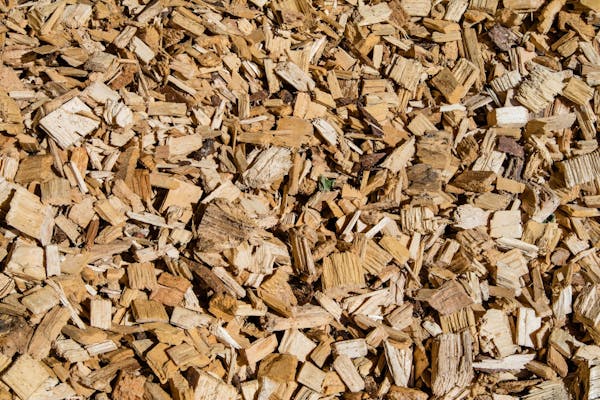BECCS: No time for false saviours
Dr. Shaye Wolf, Climate Science Director for the Center for Biological Diversity, explains the climate and other harms from BECCS.
The groundbreaking Special Report on 1.5°C Global Warming (SR1.5) by the Intergovernmental Panel on Climate Change woke the world up to the urgency of limiting global average temperature rises to 1.5°C above pre-industrial levels.
But there are still only a handful of climate mitigation scenarios showing how we can achieve this dramatic shift, and most of them rely on a largely hypothetical technology called BECCS – Bioenergy with Carbon Capture & Storage.
The assumption behind BECCS is that because trees absorb carbon, if you burn them for energy and then capture and bury the emissions below ground, you achieve carbon dioxide removal from the atmosphere (CDR), or “negative emissions.”

Unfortunately, the reality is quite different. Putting our faith in BECCS -- especially on a large scale -- is loaded with dangers and uncertainties for both people and nature. And many experts now believe it could even accelerate climate change.
Here are 5 reasons why BECCS is not a real climate solution:
1. The amount of BECCS in the IPCC’s own mitigation scenarios is unsustainable
In the four 1.5° scenarios presented in the IPCC SR1.5 report for policymakers, the two scenarios that rely most heavily on BECCS use a global amount of bioenergy deemed unsustainable in other chapters of the report. As a Stanford study points out, “Massively expanding managed land for CDR could crash through the planetary boundary for sustainable land use.”
2. One of the many reasons for the unsustainability is that BECCS deployed on a large scale would compete with land to grow food.
It’s been estimated that growing dedicated crops for BECCS would require 0.1-0.4 hectares of land per hypothetical tonne of carbon removed. One analysis that gives a 50% chance of staying below 2˚C of global warming would require a huge amount of additional land for growing biomass -- 1-2 times the size of India. It goes without saying that this would have dramatic impacts on food, water, and biodiversity, turning our landscapes into monoculture plantations.
3. BECCS is not carbon neutral
Carbon capture and storage only capture emissions released from burning biomass, but emissions are released along the whole production chain: from the soil when a forest is logged, from the fertilizers used to grow the biomass, from transporting and refining the wood, and even from capturing and storing emissions. As shown in the image below, these additional sources of emissions and the carbon uptake that you forego by cutting and burning the tree means the overall process is far from carbon-negative.
4. BECCS would harm biodiversity
When biomass comes from harvesting existing forests, biodiversity is harmed during the harvest, and this is even worse if the forest is converted to a monoculture plantation. In a synthesis study on the impacts of different carbon removal technologies, the conclusion was that BECCS would almost certainly reduce biodiversity if implemented at scale.
5. BECCS is being used to justify continued fossil fuel extraction
We are beginning to see how the major polluters who want to rely heavily on BECCS are also proponents of business-as-usual pollution. BECCS gives a false sense of security, promoted by those who have a vested short-term financial interest in perpetuating the myth that we can avoid the impacts of 1.5° even if we continue polluting.

Image credit: Courtesy of Fern
Thankfully, however, the controversy around using BECCS as a carbon removal technology has been mounting in climate circles, as the science continues to reinforce the message that BECCS remains a bad bet, and not just in theory.
Can we achieve the carbon dioxide removal we need to stay below 1.5˚C in global temperature rise? The answer is yes – through the protection and restoration of forests across the globe, empowering the Indigenous people and local communities whose livelihoods depend on them.
A scientific report commissioned by a group of NGOs, including Fern reveals that we can limit warming to 1.5° by combining deep emissions cuts with efforts to end deforestation, reduce meat consumption, improve agricultural practices, and restore natural forests. This has been reinforced by the findings of the One Earth Climate Model, which shows that approximately 400 billion tonnes of negative emissions are possible by 2100.
Explore Climate Solutions




